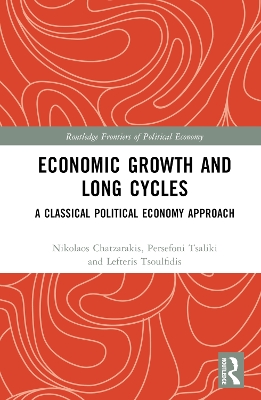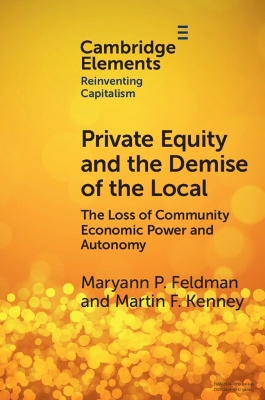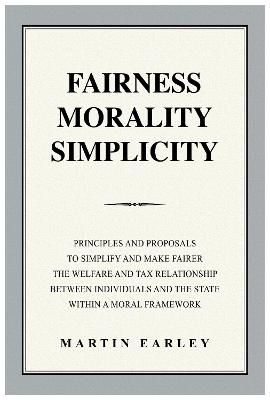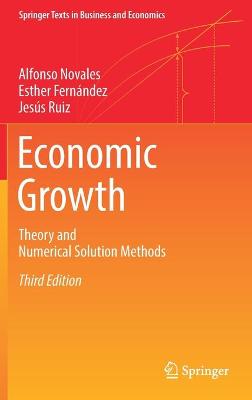Handbook of Economic Stagnation
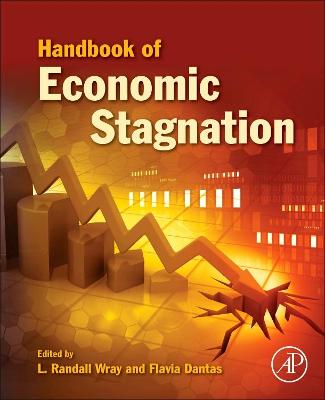 portes grátis
portes grátis
Handbook of Economic Stagnation
Wray, Randall; Dantas, Flavia
Elsevier Science Publishing Co Inc
04/2022
430
Mole
Inglês
9780128158982
15 a 20 dias
450
Part II: Causes and Consequences Role of Economic Policy 14. Secular Stagnation or Stagnation Policy? Steindl after Summers 15. There is no secular stagnation - just irresponsible fiscal policy 16. The labor injunction and peonage - how changes in labor laws increased inequality during the Gilded Age 17. What the Federal Reserve Got Totally Wrong About Inflation? Inequality 18. Income Shares, Secular Stagnation, and the Long-Run Distribution of Wealth?. 19. Varieties of Capitalism and Growth Regimes: The Role of Income Distribution? 20. Trends in US income inequality 21. Where Do Profits and Jobs Come From? Employment and Distribution in the US Economy 22. Secular stagnation and concentration of corporate power Debt and Finance 23. Private Debt and Public Debility 24. Secular stagnation in the framework of rentier-financier capitalism and globalization? 25. The drivers of household indebtedness re-considered: An empirical evaluation of competing arguments on the macroeconomic determinants of household indebtedness in OECD countries 26. The Economics of Instability: An Abstract of an Excerpt Supply Side Myth, Automation, and Future of Jobs 27. Age of Oversupply 28. Automation and the Future of Work
Part III: Macroeconomic Policy in Secular Stagnation 29. Can Trump Overcome Secular Stagnation? 30. Secular Stagnation and Progressive Economic Policy Alternatives 31. The Euro Area's Secular Stagnation and What Can Be Done About It. A Post-Keynesian Perspective 32. Core-Periphery Divergence and Secular Stagnation in the Eurozone: Macroeconomic Evidence and Policy Proposals Beyond Unconventional Monetary Policy 33. We Can Have a High-Wage America 34. Explaining, Restoring Low Productivity Growth in the UK 35. Public Sector Jobs as solution to Secular Stagnation 36. Green New Deal and Sustainable Economic Growth 37. Restructuring student debt
Part II: Causes and Consequences Role of Economic Policy 14. Secular Stagnation or Stagnation Policy? Steindl after Summers 15. There is no secular stagnation - just irresponsible fiscal policy 16. The labor injunction and peonage - how changes in labor laws increased inequality during the Gilded Age 17. What the Federal Reserve Got Totally Wrong About Inflation? Inequality 18. Income Shares, Secular Stagnation, and the Long-Run Distribution of Wealth?. 19. Varieties of Capitalism and Growth Regimes: The Role of Income Distribution? 20. Trends in US income inequality 21. Where Do Profits and Jobs Come From? Employment and Distribution in the US Economy 22. Secular stagnation and concentration of corporate power Debt and Finance 23. Private Debt and Public Debility 24. Secular stagnation in the framework of rentier-financier capitalism and globalization? 25. The drivers of household indebtedness re-considered: An empirical evaluation of competing arguments on the macroeconomic determinants of household indebtedness in OECD countries 26. The Economics of Instability: An Abstract of an Excerpt Supply Side Myth, Automation, and Future of Jobs 27. Age of Oversupply 28. Automation and the Future of Work
Part III: Macroeconomic Policy in Secular Stagnation 29. Can Trump Overcome Secular Stagnation? 30. Secular Stagnation and Progressive Economic Policy Alternatives 31. The Euro Area's Secular Stagnation and What Can Be Done About It. A Post-Keynesian Perspective 32. Core-Periphery Divergence and Secular Stagnation in the Eurozone: Macroeconomic Evidence and Policy Proposals Beyond Unconventional Monetary Policy 33. We Can Have a High-Wage America 34. Explaining, Restoring Low Productivity Growth in the UK 35. Public Sector Jobs as solution to Secular Stagnation 36. Green New Deal and Sustainable Economic Growth 37. Restructuring student debt


